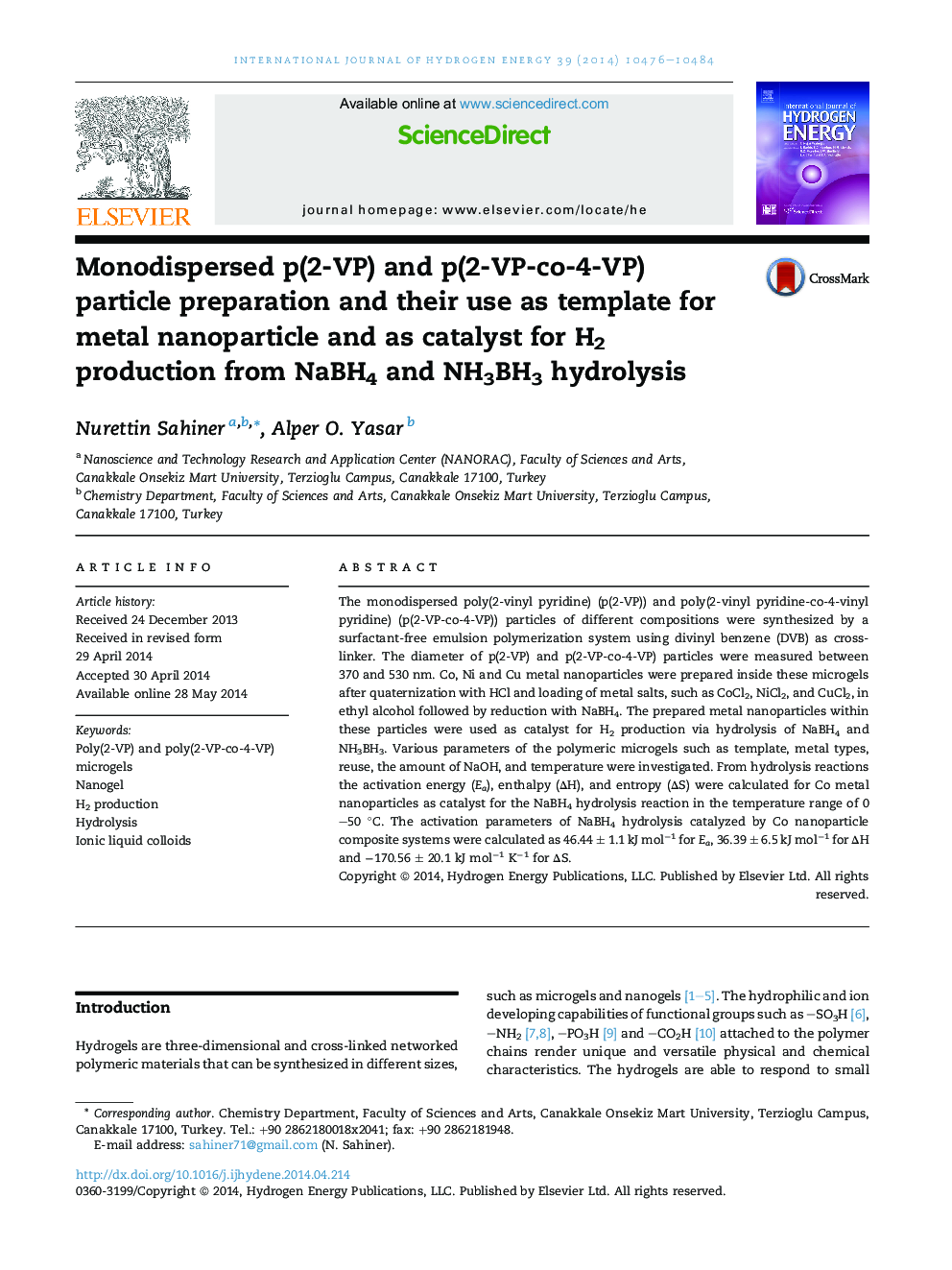| Article ID | Journal | Published Year | Pages | File Type |
|---|---|---|---|---|
| 1276174 | International Journal of Hydrogen Energy | 2014 | 9 Pages |
•Monodisperse p(2-VP-co-4-VP) colloidal microgel in the sizes ranged 370 and 530 nm.•Microgel reactors for in situ catalyst preparation form metal salts.•Microgel-M (M: Co, Ni, Cu) composites for H2 production from NaBH4 and NH3BH3 hydrolysis.
The monodispersed poly(2-vinyl pyridine) (p(2-VP)) and poly(2-vinyl pyridine-co-4-vinyl pyridine) (p(2-VP-co-4-VP)) particles of different compositions were synthesized by a surfactant-free emulsion polymerization system using divinyl benzene (DVB) as cross-linker. The diameter of p(2-VP) and p(2-VP-co-4-VP) particles were measured between 370 and 530 nm. Co, Ni and Cu metal nanoparticles were prepared inside these microgels after quaternization with HCl and loading of metal salts, such as CoCl2, NiCl2, and CuCl2, in ethyl alcohol followed by reduction with NaBH4. The prepared metal nanoparticles within these particles were used as catalyst for H2 production via hydrolysis of NaBH4 and NH3BH3. Various parameters of the polymeric microgels such as template, metal types, reuse, the amount of NaOH, and temperature were investigated. From hydrolysis reactions the activation energy (Ea), enthalpy (ΔH), and entropy (ΔS) were calculated for Co metal nanoparticles as catalyst for the NaBH4 hydrolysis reaction in the temperature range of 0–50 °C. The activation parameters of NaBH4 hydrolysis catalyzed by Co nanoparticle composite systems were calculated as 46.44 ± 1.1 kJ mol−1 for Ea, 36.39 ± 6.5 kJ mol−1 for ΔH and −170.56 ± 20.1 kJ mol−1 K−1 for ΔS.
Graphical abstractFigure optionsDownload full-size imageDownload as PowerPoint slide
